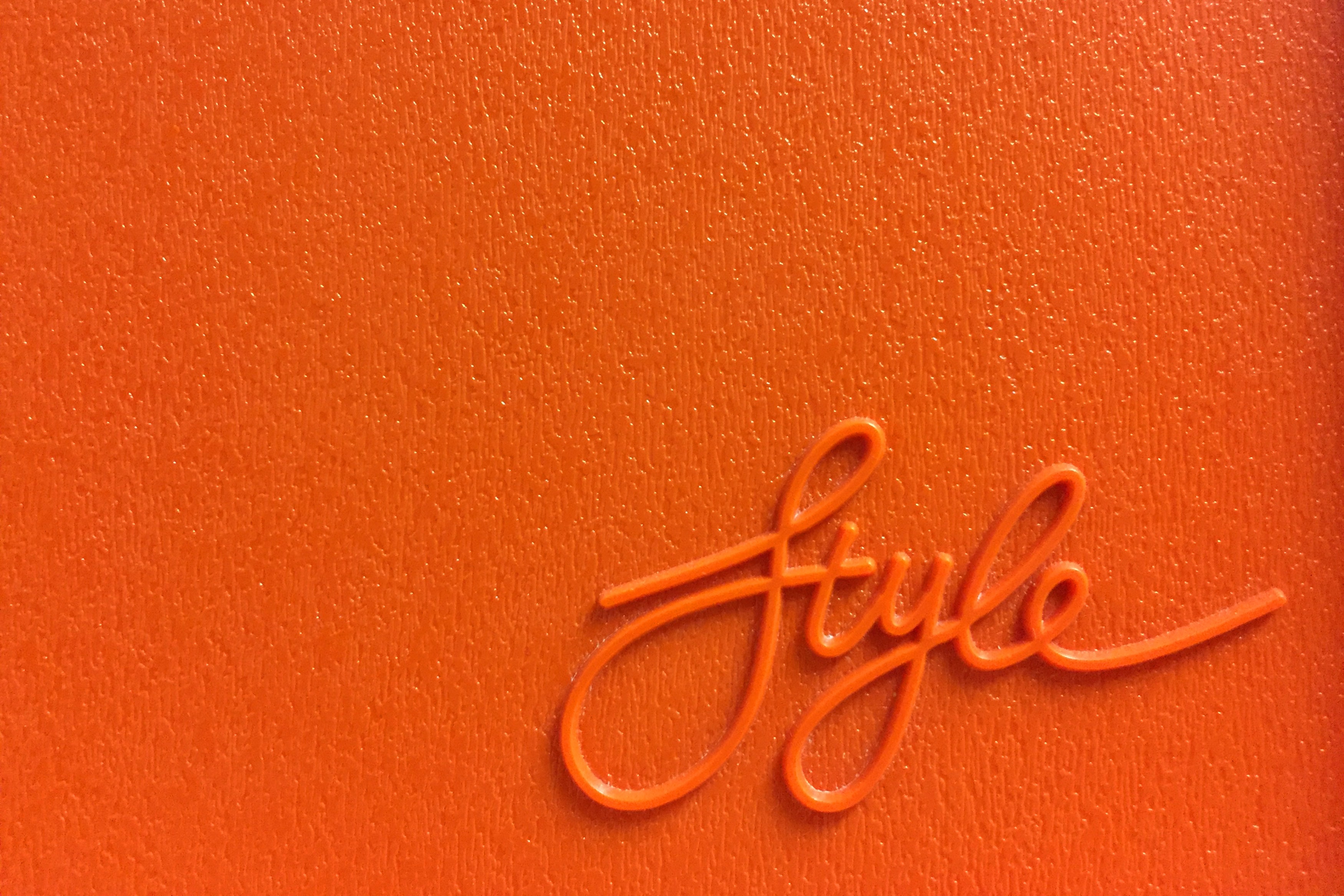Congratulations! You have a shiny new brand strategy, logo, a set of colours, a lovely typeface, super-slick photography and illustration style – but how do you know how to use them to create distinctive and attractive communications?
What you need now is brand guidelines. But where do you start? Having worked on building the design systems and guidelines for brand such as Visa, Royal Mail and Thames Water, I’m sharing the most common structure applied to brand guidelines, each with a short explainer of what’s included.
What to include in your brand guidelines?
Brand strategy
The importance of brand
Brand strategy on a page (vision, mission, values, personality)
Telling our story/origin story.
Your brand idea
How we talk
Overview
Tone of voice is how you speak as a brand. It’s how we write and how we talk in our communications, externally and internally. Tone of voice matters because it represents the personality of our brand in communications. It’s not just what we say, but how we say it. Describe the attributes that inform how you speak and write e.g., dynamic, warm, clear.
Glossary
Include any common terms and rules for writing, such as abbreviations, use of acronyms, contractions and conjunctions.
Brand architecture
Detail how all the company products and services are organised. These generally fall into three categories; Masterbrand, Sub-brands and Endorsed brands. Here are brief explanations for each:
Masterbrand
Company offers that are directly supported by the brand core proposition. They are 100% aligned to the brand strategy and visual identity. They use descriptive names to signpost, rather than specific brand names or logotypes.
Sub-brands
Company offers that are well-known in their own right by specific audiences and are closely aligned to the Masterbrand but modified slightly due to their specific offering. They might use a different brand name. A sub brand logo might be used. Messaging and visual identity may flex to suit the sub brand.
Endorsed brands
Brands within the company that are well known in their own right, and often connected to the Masterbrand through a merger or acquisition, e.g., Instagram from Meta. The Masterbrand plays an endorsed role, usually represented as a descriptive text.
Brand identity elements
Overview/gallery
The purpose of including an overview is to give an instant impression of the brand’s verbal and visual identity. It should include a collection of example applications which might include website homepage, brochure cover, event branding, mobile app, branded merchandise.
Logo
Overview
Show your logo in its preferred primary version first. This will generally be the logo as it appears on a white background. Support this with secondary versions like a white out version and a single colour black version for use when colour is not available.
Logo use
Show what background colours are allowed to be used with the logo. Show how your logo is used over images.
Logo size and positioning
Explain what size your logo should appear on different formats.
Show where the logo can be positioned across different communication, including preferred primary position (e.g., top left) and additional secondary positions.
Logo minimum size
You want people to always see your logo clearly. Specify minimum sizes for both digital and print applications.
Logo clearspace
When you place your logo in a design you want to give it room to breathe. This is called clearspace. Calculate and show what distance of space people should leave around your logo.
Logo don’ts
Don’t wait until someone breaks your logo. Remind people to take care when using your logo. Ask them not to stretch it, re-colour it, twist it, add bits to it, or change it in any way. Create some fun examples of these don’ts.
Colour
Overview
Introduce the main concept behind your colour. For Thames Water it is the ‘Power of Blue’ where blue being central to the logo, and therefore taking the lead role in all communications. Include three or four visual examples.
Colour palettes
Introduce the individual colours, red, blue, green. Include all the colour values e.g., RGB, CMYK, HEX, RAL. Organise them into primary and secondary groupings, primary being the colours you wish to be used the most.
Colour proportions
Explainhow to use colour, providing a proportion guide, e.g., primary blue 50% coverage. Again, include some visual examples here to support the theory. A colour wheel can be used as a handy device to explain what colour proportions to use.
Colour don’ts
Like for logo, include examples of how not to use colour and things to avoid. Include visual examples to support each don’t.
Typography
Overview
Introduce the typefaces you have chosen for your brand. Explain why these typefaces have been chosen, e.g., flexibility, accessibility. Detail how people can get the typefaces, e.g., Google Fonts, Adobe Typekit or a specific type retailer such as Monotype.
Weights and settings
Explain what weights your typefaces are available for use, e.g., Light, Regular, Italic, Bold, Bold Italic. Provide some guidance on minimum sizing for copy, e.g., 12pt for body, 8pt for legal footers.
Hierarchy
Type hierarchy plays a key role in engaging your audience with your communications. Provide some details on how to apply type, including specifications for Headers, Sub headers, Body copy headers, Body copy, Small print, Pull out quotes. Include a few visual examples to support the specifications.
Type and colour
All messaging you create should be clear, legible, and accessible to everyone. Provide details of the colour combinations that permitted, e.g., light colour type on dark colour backgrounds, dark colour type on light backgrounds.
Graphic device
The strongest brands often use a distinctive shape or graphic device to create distinctive brands. Mastercard use a circle device, derived from their iconic logo. HSBC use their four-triangle symbol.
If you adopt a graphic device, provide details in the same approach to type or colour. Provide an introduction, explain how to use the graphic device e.g., size, position, colour. And explain how it combines with other elements such as your logo, type, photography.
Photography
Photography helps tell the stories of your people, your operations, your communities, and your customers.
Overview
Provide details of key photography principles, e.g., capture engaging, natural, everyday moments, reflect the diversity of both our own community and the wider world around us.
Types of photography
Organise your photography into categories, e.g., customers, operations, employees, objects, textures. These allow you to provide specific details of how and when to use specific types of photography.
Use
Provide details of how to use photography within communications, e.g., how it combines with your logo, how to size and position, how it is used with type. Provide some example visuals to accompany the key principles.
Illustration
Illustration is a useful tool to communicate complex themes that are hard to achieve using photography.
Overview
Provide details of key illustration principles, e.g., specific styles used, noting any official illustrators to commission.
Use
Provide details of how to use illustration within communications, e.g. how it combines with your logo, how to size and position, how it is used with type. Provide some example visuals to accompany the key principles.
Iconography
Icons are simplified visual representations of key words such as search, news, location, contact us. Icons are typically used at small size to aid navigation.
Overview
Provide an introduction of what your icon style is and how you use icons within your communications.
Icon library
Provide details of your library of icons available for people to use.
Creating and sourcing
Provide details of how you create icons.
Use
Provide details of how icons are used, e.g. colour combinations, size and positioning within design layouts.
Infographics
Infographics are interpretations of data and facts, using a combination of words, numbers, icons, charts and graph elements.
Creating and sourcing
Provide details of how you create infographics e.g., graphic style, use of colour
Use
Provide details of how icons are used, e.g. size and positioning within design layouts.
Design layout system and grid
Provide details of your chosen grid system that design layouts are built on.
Applying our brand
How you apply your brand identity to specific applications will vary. Applying your brand section will also depend on the individual needs of your business or organisation. You may have just started out in business and require less applications of your brand. Or you might be more established and have built up a broader set of communication types and audiences.
You can structure simply by communication type, e.g. website, exhibition, social media post. Or you can organise how to apply the brand identity based on audience types and communication objectives.
Here are those two example structures.
Example content based on application type
Digital
Can include website, app, touch screen interfaces
Advertising
Can include Out of home (OOH) e.g. billboards, digital advertising
Motion
Can include standardised start and end-frames to video, typography movement styles, graphic element movement styles.
Social Media
Can include Twitter, Instagram, Facebook, LinkedIn
Literature
Can include Corporate brochure, Publications, Journals, Magazines, Reports, White Papers, Employee Handbook, Special Event programme.
System templates
Can include PowerPoint, Word, Email templates, Stationary
Buildings and Environments
Can include Signage, Posters, Reception areas, Office wall decals, Trade shows and events
Based on audience types and communication objectives
Customer
– Attract and inspire
– Inform and support
Employee
– Attract and inspire
– Inform
– Develop and support
Corporate
– Report
– Inform
Third party
– Our shared voice
Building brand guidelines will help provide a consistent experience and common understanding of your company or organisation. It will help build greater trust and advocacy amongst your employees, partners and customers.



